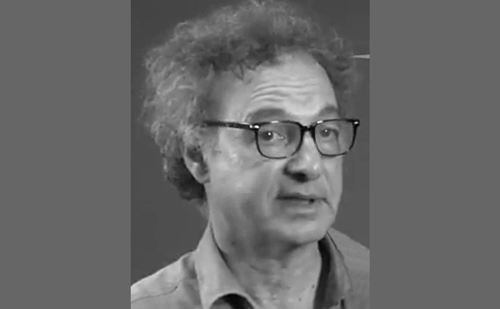Raised intracranial pressure (ICP) is frequent and is associated with poor outcome after brain injury, and also after liver failure, acute ischaemic stroke, cerebral venous thrombosis, meningitis and encephalitis.1–5 However, the early detection of raised ICP can be difficult when invasive devices are not available. Clinical signs of raised ICP are not specific and are often difficult to interpret. In sedated patients, clinical signs of raised ICP frequently appear late, when ischaemic brain injury is already established.6 The gold standard method for ICP measurement is based on the use of invasive devices such as intraventricular drain or intraparenchymal probes. Nevertheless, invasive ICP monitoring is not routinely used in many centres – principally because of the lack of availability of neurosurgeons – or may be contraindicated in cases of coagulation disorders. The worst attitude would be to ignore the danger of raised ICP in these patients and to run an unacceptable risk of cerebral ischaemia. In these situations, a non-invasive estimation of the risk of raised ICP may be clinically valuable.
Anatomical Background
The optic nerve, as part of the central nervous system, is surrounded by a dural sheath. The intraorbital subarachnoid space surrounding the optic nerve is subject to the same pressure changes as the intracranial compartment.7–10 The retrobulbar part of the perioptic subarachnoid space is distensible and can therefore inflate if pressure increases. Hayreh showed in monkeys and humans that the subarachnoid spaces surrounding the optic nerve communicate with the intracranial cavity, and that changes in cerebrospinal fluid (CSF) pressure can be transmitted along the optic nerve sheath.11 He also showed that oedema of the optic disc (papilloedema) requires a few days to develop and resolve, making it less useful when acute changes in ICP are suspected.11 Papilloedema thus appears more as a delayed consequence of chronic CSF accumulation in the retrobulbar optic nerve dural sheath due to raised CSF pressure in the cranial cavity. Direct assessment of such CSF accumulation by measuring optic nerve sheath diameter (ONSD) may provide an earlier and more reactive measure of intracranial hypertension. In cadavers, the ONSD displays predominantly anterior enlargement following injection into the orbital perineural subarachnoid space.12 In humans, following an intrathecal lumbar infusion of Ringer’s solution, ONSD dilation reaches a maximum at peak CSF pressure, strongly suggesting a close relationship between CSF pressure and dilation of the orbital perineural subarachnoid space.
Optic Nerve Sheath Diameter Measurement Using Ocular Sonography
Ocular sonography has been extensively and safely used for ophthalmic evaluation for more than 20 years.13 Ocular ultrasound is regarded as safe as long as Doppler-frequency analysis is not used for a prolonged duration.14 B-mode ultrasound equipment, which is commonly used today, is not capable of producing a harmful temperature rise.15 Nevertheless, prolonged exposition to Doppler frequency may be harmful due to heating of the retina. Patients must be placed in a supine position at 20° to the horizontal. Multipurpose ultrasound units with high-frequency transducers (>7.5MHz), now available in most ultrasound systems, have high lateral and axial precision.16 A thick layer of gel must be applied over the closed upper eyelid. The probe must be placed on the gel in the temporal area of the eyelid (not on the eye itself) to prevent pressure being exerted on the eye. The placement of the probe must be adjusted to allow a suitable angle for displaying the entry of the optic nerve into the globe. 17 The 2D mode is generally used, and ONSD must be measured in its retrobulbar segment, 3mm behind the globe and perpendicularly to the optic nerve axis (see Figure 1). Recent advances in sonographic technology allow promising 3D measurements.
There is a growing body of evidence in the clinical setting suggesting that millimetric increases in sonographic ONSD are related to raised ICP. Clinical studies have suggested that sonographic measurements of ONSD correlate with clinical signs of high ICP in children with hydrocephalus or liver failure.17–20 In adults with moderate traumatic brain injury (TBI) ONSD is also correlated with signs of high ICP on computed tomography (CT).19,21 In 35 adult patients with TBI assessed in the emergency department, Blaivas et al. found that signs of elevated ICP on the brain CT scan were closely related to dilation of the optic nerve sheath on ocular ultrasound scans.19 Mean ONSD was 6.3mm in patients with radiological signs of elevated ICP and 4.4mm in patients with no such signs. The authors considered 5mm to be the upper limit of normal value. The specificity of this cut-off value for detecting tomographic elevated ICP was 93% and its negative predictive value was 100%. These results were confirmed in another study performed by the same team.21
Very recently, four clinical studies22–25 have compared sonographic ONSD with invasive intracranial ICP, which remains the gold standard. Measuring ONSD and ICP simultaneously, a good relationship between ONSD and ICP has been described (r=0.71 and r=0.68, respectively).22,24 Interestingly, these studies, which were performed in the intensive care unit (ICU) or emergency setting in acute neurocritical care patients, found a very similar best cut-off value of ONSD to diagnose raised ICP: the best cut-off value was 5.7–5.8mm for predicting elevated ICP (>20mmHg). As this test is likely to be used for detection, its sensitivity (probability of positive tests for sick patients) and negative predictive value (probability of the patient being healthy if the test is negative) must be excellent. Both of these values were above 90% for an ONSD cut-off of 5.7mm. The probability of having high ICP was very low (less than 5%) when ONSD was less than 5.8mm. When comparing sonographic ONSD and ICP measured with ventricular drain, it has been shown that the best cut-off value for detecting ICP >15mmHg (20cmH2O) was 5mm, with a sensitivity and specificity of 88 and 93%, respectively.23 Interestingly, changes in ONSD are also strongly related to ICP variations (r=0.73).24 Changes in ICP could therefore be detected by changes in sonographic ONSD. However, optic nerve diameter (OND), i.e. not taking into consideration the sheath but only the nerve itself, has a poor relationship with ICP, and changes in ICP were not detected by changes in OND.24 The variation of ONSD during raised ICP cannot therefore be related to optic nerve dilatation, as during nerve oedema, but rather to its sheath distension, probably due to the increase in CSF pressure surrounding the optic nerve.
There are some limitations to the use of ocular sonography in the detection of raised ICP. Inexperience with sonography may be an important limitation in the use of this method. However, as described by Tayal et al., the learning curve seems to be rapid: an experienced sonologist needs as few as 10 measurements and three abnormal scans to obtain adequate results, while for novice sonologists 25 scans may be needed.21 Variability in ultrasonographic measurement of ONSD seems to be limited, as the median intra-observer and inter-observer variations were shown to be less than 0.2 and 0.3mm, respectively.22,24,26 Sonography allows only sequential measurements, while ICP is a dynamic parameter that can change very rapidly. Significant episodes of raised ICP can therefore remain unrecognised by sonographic examination. Precise ICP prediction with sonography remains difficult, as an ICP range of more than 10mmHg can be observed for a given ONSD value. However, performances of this test to diagnose raised ICP appear to be interesting in a clinical decision-making approach. This test could be used as an attractive tool to rule out raised ICP. Nevertheless, larger studies are needed to document the precision and confirm the accuracy of this method. Finally, the ‘real-life’ feasibility and accuracy of ocular sonography, performed by non-experienced physicians, are also key points to address in future studies.
Optic Nerve Sheath Diameter Measurement Using Magnetic Resonance Imaging
High-resolution magnetic resonance imaging (MRI) can be used to precisely measure the diameter of the optic nerve and its surrounding sheath by using a fat-suppressed T2-weighted sequence.27–31 ONSD can easily be measured using a T2-weighted sequence 3mm behind the ocular globe, as described for ocular sonography (see Figure 2). On T2- weighted sequences, water (and CSF) show high signal (white), fat and grey matter appear as light grey and white matter as dark grey. Contrast between CSF and orbital fat surrounding the optic nerve sheath can be improved with fat suppression, increasing the image resolution for the ONSD measurement.27,28
In cases of idiopathic intracranial hypertension or papilloedema, the retrobulbar ONSD, measured by MRI, has been described to be enlarged.29 Moreover, in cases of hypotension in the CSF, ONSD was found to be reduced.32 We recently showed that MRI using ONSD measurement is potentially useful to detect raised ICP.33 ONSD (but, here again, not OND) is strongly related to ICP. This is likely to reflect the distension of the nerve sheath during increases in CSF pressure. Interestingly, the best cut-off value for raised ICP using MRI (5.8mm) was very close to the value obtained using ocular sonography (5.7–5.8mm). The negative predictive value of an ONSD less than 5.82mm for having an ICP >20mmHg is more than 90%. As described with ocular sonography, MRI-derived measurement of ONSD has low inter-observer variability (less than 0.2mm). A major limitation of this study is probably related to MRI itself, with limited access, necessity of patient transfer into an MRI environment and specific contraindications to MRI.
Conclusion
The distension of the optic nerve sheath reflects the increase in CSF pressure and can be used to estimate the risk of raised ICP. Both ocular sonography and brain MRI enable valid measurement of the distension of the dural sheath surrounding the optic nerve. Ocular sonography is simple, rapid and non-invasive, and can be performed at the patient’s bedside. When MRI is indicated, ONSD can easily be measured on routine T2-weighted sequences. In both methods, enlarged ONSD is a robust predictor of raised ICP, and an ONSD above 5.8mm is associated with a 90% probability of diagnosing raised ICP. This method should obviously not replace invasive ICP monitoring, which allows guided directed therapy by providing continuous and reliable information. However, when raised ICP is suspected but invasive ICP monitoring cannot be used or is not clearly recommended, this non-invasive estimation of the risk of raised ICP may be of great clinical value. The approach may detect patients at risk, help decision-making regarding the placement of invasive ICP devices and allow selection of patients for transfer to specialist centres. ■












